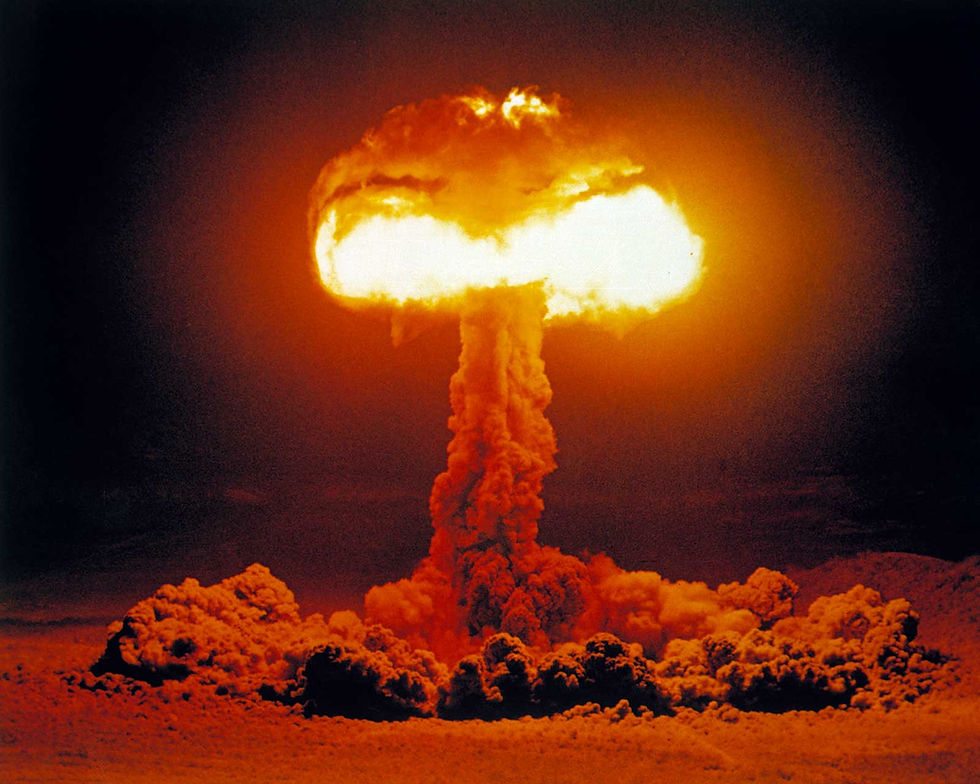Iron Man Part II: The Marvels of Fission V.S. Fusion
- joann yu
- Jul 3, 2023
- 3 min read
What have you heard about fusion before? Clean, efficient, energy of the future? Well, while Part I of the Iron Man blog series was focused on the facts and figures of fusion, Part II here will seek to make an argument–the “energy of the future” already exists.
One of the strongest arguments for fusion is its "cleanliness". Scientific American argues that
[fusion] has the potential to produce energy with near-zero carbon emissions, without creating the dangerous radioactive waste associated with today's nuclear fission reactors, which split the very heavy nuclei of radioactive elements.
Fusion indeed creates no radioactive waste–fusion energy production is not based on a chain reaction, as is fission. For the fusion of hydrogen nuclei to be sustained, the plasma must be kept at extremely high temperatures with the support of all reactor systems. Every shift in the working configuration of the reactor causes the cooling of plasma and the reduction of its containment. When such a change occurs, the reactor would automatically come to a halt within a few seconds, since the process of energy production is terminated once needed temperatures fail to be reached; the interruption of the fusion process will not affect the outside.

Credit: Scientific American
Here’s the caveat: in practice, nuclear fission can be just as safe, all while being economically and practically feasible in the status quo. Let’s talk about radioactive waste. Indeed, some like to argue that nuclear power plants cannot be considered “clean” since they create radioactive waste. However, there already exist ways to safely store nuclear waste. After nuclear fuel has been in operation in a reactor for 5 years, it is removed as waste. If it is high-level radioactive waste, it is placed in a cooling pool, where it will also stay for about 5 years. The water is temperature-regulated which serves a double purpose: cooling the initially high-temperature materials and preventing radiation from escaping. Most of the radioactive decay occurs within the first month, with 87% of the radiation decaying off. New nuclear technology, such as small modular reactors, can even reduce the time that nuclear waste spends in the cooling pool.
Once the fuel has undergone the cooling process within the pool, operators extract it and transfer it into a sturdy container known as a dry cask, made of concrete and steel. These containers are filled with inert gas and designed to withstand natural disasters and various exceptional circumstances. They demand minimal upkeep, and for each ton of used nuclear fuel, we need 10 tons of material to store it.
The accumulated waste generated by the U.S. nuclear industry since the 1950s occupies a relatively small area and is securely stored. Due to the high energy density of nuclear fuel (a small amount of fuel creates a large amount of energy), nuclear power plants produce substantial amounts of energy while generating minimal byproducts. To put it in perspective, all the waste produced in the United States would only fill a football field that is 10 yards deep. In contrast, a single coal plant produces the equivalent volume of waste in just one hour compared to the entire history of waste generated by nuclear power.
The bottom line? Nuclear power plants handle their waste well.
Scientific American also argues that fusion is “inherently safe” due to its operating systems. True. But I raise them–since the founding documents were written, how many deaths have occurred in the United States due to a commercial nuclear reactor accident? Zero. In fact, the worst commercial accidents people often reference–Chornobyl and Fukushima–were disastrous due to faulty structures (lack of a containment structure for Chornobyl and failure to account for natural disasters for Fukushima) that would not pass current inspection standards.
Scientific American does get one thing right: fusion cannot be implemented on a large enough scale to prevent the impending climate crisis. So why not focus on imposing a form of safe, carbon-free, and economically competitive energy instead of pouring millions of dollars into flashy, impractical technology? Indeed, all the technologies that are needed have already been invented. What is needed in the status quo is not innovation in the nuclear sector, but implementation. Countries like Germany and France must abandon their “nuclear allergy” and realize that the green revolution that they are calling for can only come in the form of nuclear fission. They must stop the rolling back–or in some cases, banning–of nuclear power plants, but instead push for mass adoption.




Comments